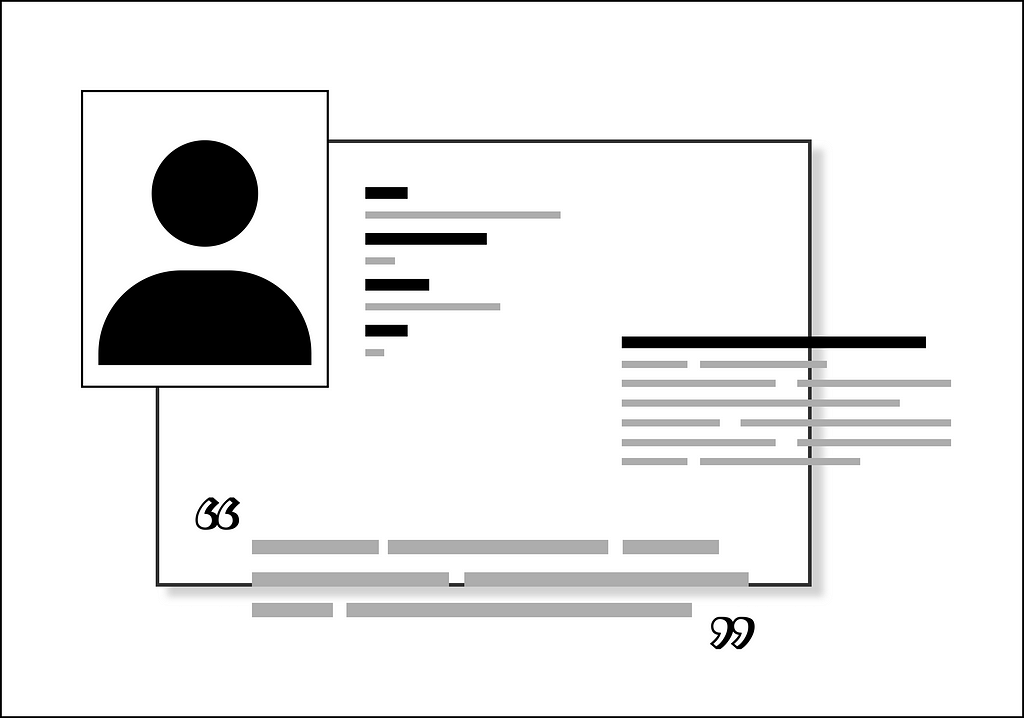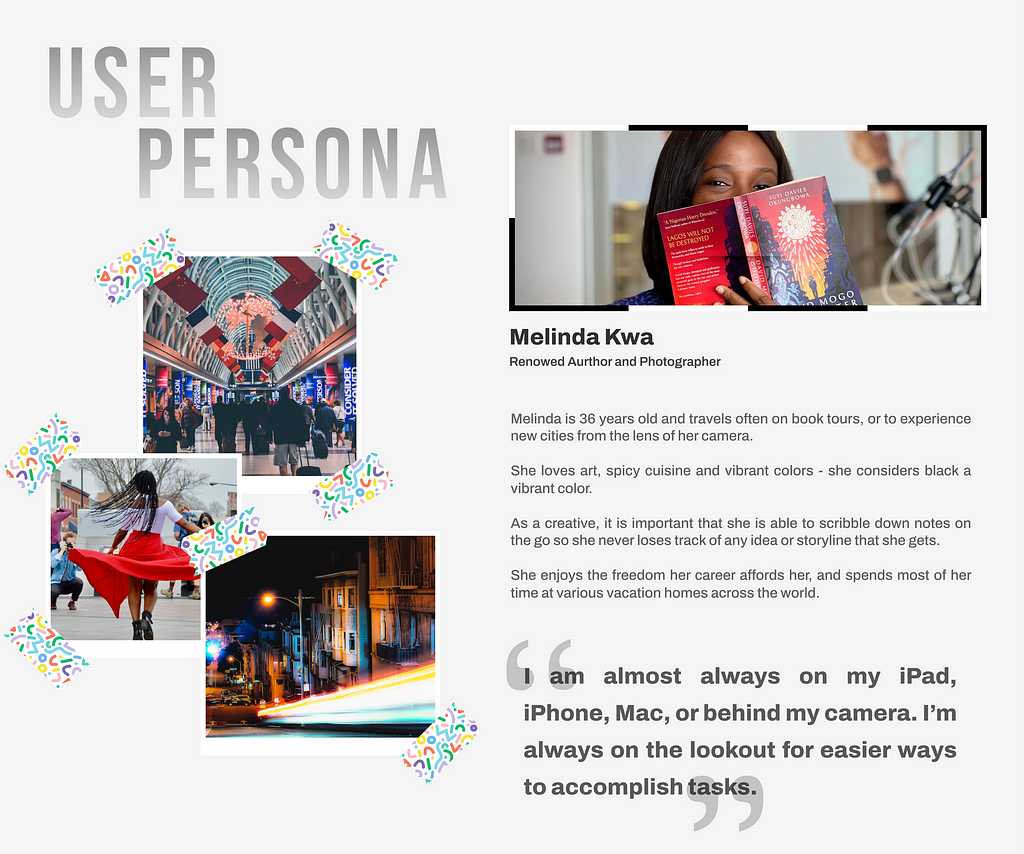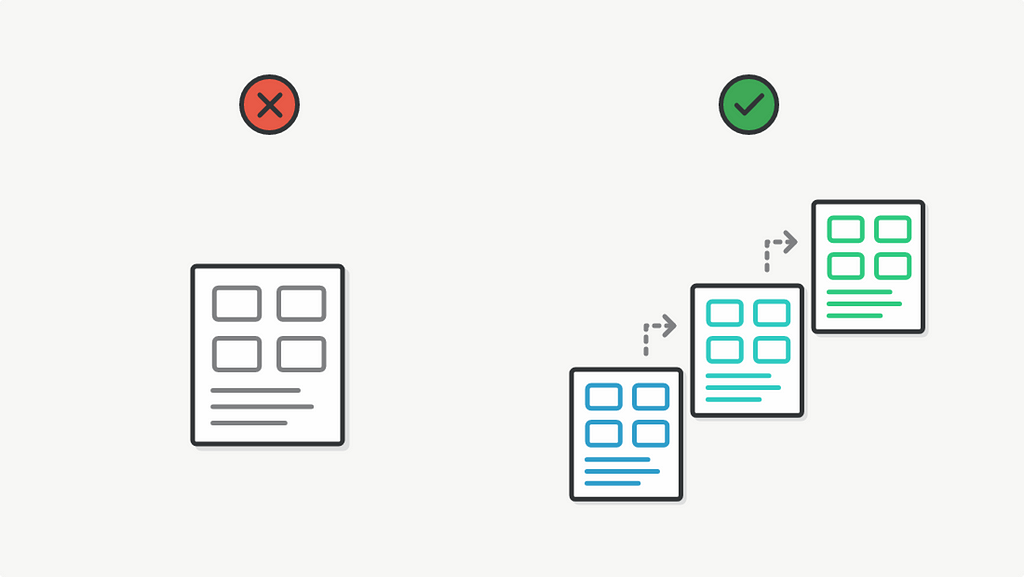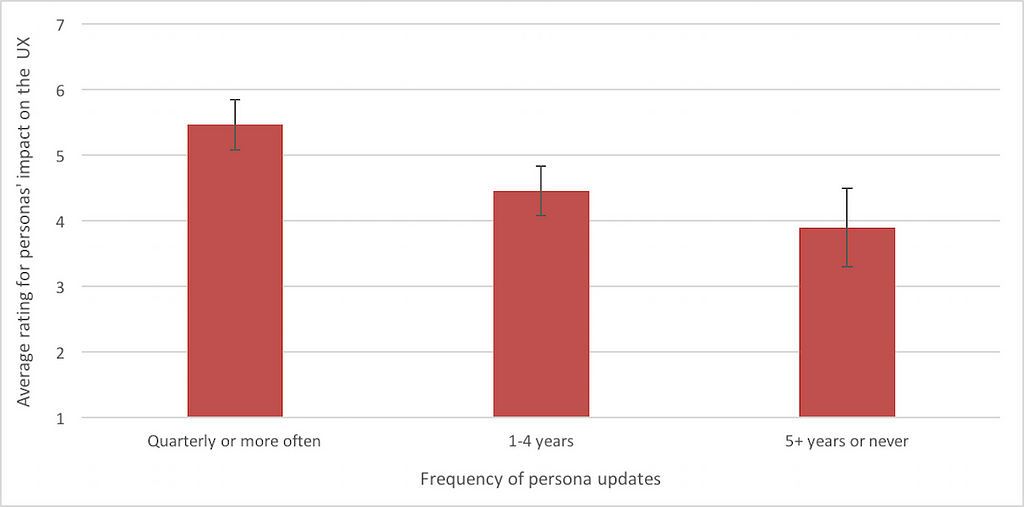Too often, designers create a persona at the start of a project, then put it up on a wall like a graduation picture and simply leave it there to be looked at and referenced occasionally…pulling out interesting stories when the situation demands.
But your persona should be alive. It should live, grow, evolve and adapt. Just like you. More on this in a bit, but first, let’s establish what a persona is and why it is important.

What is a persona?
If I were to define a persona, I’d refer to it as a visual representation of the target users of a product or service. However, my definition was formed from consuming a lot of other definitions, so let’s look at some of those.
A persona is a fictional, yet realistic, description of a typical or target user of the product. A persona is an archetype instead of an actual living human, but personas should be described as if they were real people.
– From Personas Make Users Memorable for Product Team Members by Aurora Harley.
While personas do not describe an actual human, they should be designed in such a way that suggests an actual human being lies behind the name, face and stories.
In A 5-Step Framework to Building Better Personas, Nikki Anderson defined personas as “…representations of your users and a combination of needs, desires and pain points of these groups.”
The groups she refers to are the different people who use or will use your product. Sometimes these users fit into one group, and in other instances, the users are so diverse that you may need 2–4 personas, especially if your business or company solves different problems.
Why are Personas Important?
Personas are an essential tool in UX design. Nick Babich writes in an article for Adobe Blog “Personas help a product team find the answer to one of their most important questions, “Who are we designing for?” By understanding the expectations, concerns, and motivations of target users, it’s possible to design a product that will satisfy users' needs and therefore be successful.”

Here’s what personas do:
- Capture your user research in a digestible, visual format
- Build user empathy and make sure the design process prioritises the target audience’s needs
- Steer, inform and justify design decisions
- Enable others to understand who you’re designing for
(Source: What are UX Personas and What are they used for? By the UX Design Institute)
That being said…don’t build a dead persona.
Bring Your Persona to Live
A user persona should NOT be a static document or rectangle in your design file. As you grow and garner new information or data about your users, your persona should be updated to reflect that.
These updates should not have to wait five years before happening. They should be a continuous, never-ending process.
Humans grow, evolve, change, and adapt to changes every day. So should your personas (Well maybe not every day, but as often as needed).

UX designers twenty years ago used design software products that were not entirely simple, intuitive or fast to use. This meant that designers had to put in a lot more focus, effort, and other resources, in order to produce quality work.
UX designers today, however, have great software products that are intuitive, and easy to learn. The designer is less stressed today than they were twenty years ago.
Looking at this, a persona designed twenty years ago will not efficiently describe the designer of today. That’s a twenty-year difference, but there are other examples with a shorter timeframe too.
A description of most people pre-pandemic will not entirely match how they’d be described today. People began using their devices more, washing their hands more, and using video conferencing tools more. Most students who were just students at the time (especially in countries like Nigeria where public universities did not offer virtual learning during that period), picked up tech skills, got remote jobs and generally did a lot of new things.
All these changes due to the pandemic can affect how users interact with your product. If your persona still reads the same thing it did pre-pandemic, you may want to revisit that data and ensure it is still accurate.
When to Update your Persona
Research conducted by the Nielsen Norman Group showed that UX designers who updated their personas quarterly, recorded better user experience in the final product, due to the impact of the persona.

The research article read: “Adopting a quarterly revision schedule paid off for many projects. These trends suggest that teams who keep their personas up-to-date perceive their projects as more successful in improving the user experience of their final products than teams who fail to keep persona data updated.”
If updating personas quarterly may be overwhelming for you and the company, consider updating on a need basis. Below are instances where you may need to update your persona:
1. As you receive new data on your users.
Generally, I begin research with an archetype (proto persona in this case). After I have gathered insights from research, I update this persona to match the data I have now received.
If you employ lean methodologies in your company or process and you test with users often, every test can serve as a new opportunity to update your persona on the things you’ve just learned.
Sometimes it is not making changes to existing information, but simply adding to it based on newfound insights.
Once you have an opportunity to interact with users, including tracking their behaviour on your product, sit with it and identify any new insight that will help build your persona.
2. After major changes in the industry your target users operate in
You should keep an eye on the goings on in the industry your users operate in to identify changes that may impact their lives positively or negatively.
This change can be global or industry-specific. Again, a good example is the pandemic. What it did was open the door to a lot more remote work, especially in the tech space. So your typical persona who goes to work every day and needs to get on a bus or wait for an Uber now works from their home. That’s a big change that can impact your users and how you design for them.
3. When the business or business goals have changed
It is possible that after some years, you decide to make a pivot with the business and where it is headed. In this case, the people you were serving before may not necessarily remain your target. So you have to find out.
Do not simply move with an old persona (what’s that they say about new wine in old wineskins?). Conduct research and determine if your persona needs to be updated.
As a human being, you learn new things about yourself as you go through life. You may find a new hobby or discover a new trait. Other times your views on certain things change. You can go from earning $10,000 a year to $100,000. You can also go from $100k to bankruptcy. People change. And so should personas.
For a persona to truly be a representation of actual humans, then it must itself take on certain human attributes. Like living and breathing.
Personas should be living and breathing was originally published in UX Collective on Medium, where people are continuing the conversation by highlighting and responding to this story.